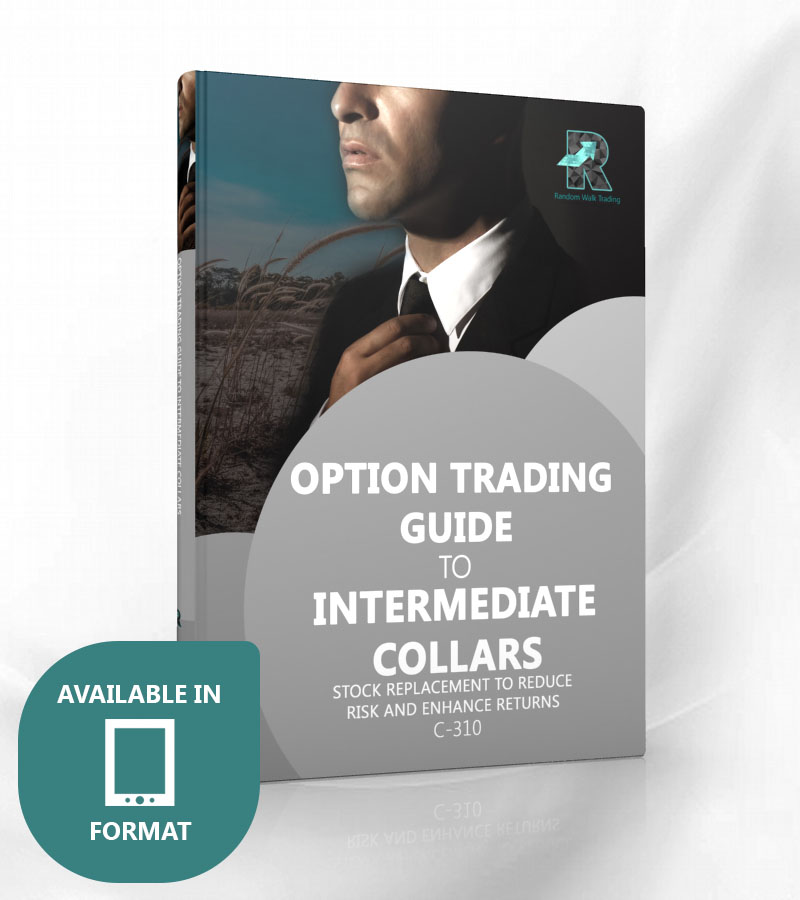If you have ever used a coupon in the store or auto/home insurance, then you have already used options.
And the great news is that there are only two types of options to learn – calls and puts. Call options give you the right to buy a stock, and put options give you the right to sell a stock.
Call Option
Suppose that a stock is trading for $192 and you thought it was set to go higher. Instead of buying shares you could purchase a call which gives you the right to buy shares. If you buy the 195-strike call, it gives you the right to buy the stock for $195 any time you want prior to the option’s expiration. Should the stock run up to $200, $210, or $250, you can still buy it for $195.
Put Option
Suppose that you thought the same $192 stock was going down in price because bad news was coming out. You could purchase a put option that gives you the right to sell shares. If you buy the 190-strike put, it gives you the right to sell the stock at $190 any time you want prior to the option’s expiration. Even if the stock drops down to or below $100 per share you will still be able to sell it at the 190 strike (the agreed upon price). Now let’s go into what this means in more detail starting with the call, and then proceeding to the put.
Stock Call Option Compared to Coupon
A Store coupon is a legally binding contract the store provides that allows you to buy something at a discounted price. The coupon, like a stock option, has several features:
- An agreed upon price/discount = strike price
- Quantity
- An expiration date
Computer Coupon
The coupon entitles the holder to buy a new PEAR 3000 laptop for $599, regardless of the store’s list price. Even if the computer is selling for $999 to the general public, the coupon allows the holder to get the laptop for $400 less. That coupon has a real value of $400 to anyone wanting to buy the computer. And being a coupon, there is always that fine print lawyers come up with that includes an expiration date, and how many you can buy.
Stock Call
A stock coupon, known as a “call” option, works the exact same way as our PEAR coupon. A little story will assist in making this comparison.
Suppose that you had a strong inkling or belief that a certain stock called XYZ or PEAR (PEAR Computer, Inc.) was going to go up dramatically after earnings come out in the next 2 months. And since the company is publicly traded, buying shares in PEAR does make you a partial owner of the store. Yet, the price of PEAR is $192 per share and you do not have enough money to buy 100 shares of stock (total cost of $19,200 = $192 per share X 100 shares) until you receive your Christmas bonus in 2 months.
What do you do?
You are afraid that by the time you have the cash to purchase PEAR shares, the stock price could be at $250 per share. If that happened not only would you have missed the opportunity to make $58 per share ($250 – $192), but now the same 100 shares will cost you $5,800 more. Not having money is such an inconvenience, huh? Well, there is a solution.
Instead of buying 100 shares, you can buy the right to purchase 100 shares – the call option. The coupon we were previously talking about gave you the right to buy 1 computer for $599, regardless of how much the store was charging, any time you wanted before the expiration date. The call option will allow the same thing, but for shares of stock instead of a computer.
We can buy the right ( a call option) to buy the stock for $195 per share at any time we want in the next two months. Buying this call option will cost us $1.35 per share.
You may be thinking, “Why would I pay money for the right to buy the stock at a higher price than it is trading for right now? After all, right now I can buy the stock for $192 per share, but this coupon gives me to the right to buy the stock $3 higher at $195 – that is no savings.”
The thing you have to keep in mind is that you cannot afford to buy the stock right now, and you are expecting it to trade for $250 a share by the time you can afford the stock. With your coupon, you can still buy the stock at $195 per share even if the rest of the world has to pay $250 per share.
Stock Put Option Compared to Insurance
Put options work the same way as the call but in reverse. When you buy a car and ensure it, the insurance is to protect you from a loss should you get in an accident or the car is stolen. Let’s say that you purchased a new car for $30,000 and bought complete and total coverage on the car that guarantees 100% reimbursement. Good luck finding that policy as most policies have legal fine print, but let’s assume for this example that it is true. We will also say that that policy costs $1,000 per year.
Three months later your awesome Random Walk Spider 600 series car is stolen. How much are you out? The first thought is that you are out nothing because you have such great insurance, and they are going to write you a check for $30,000. Yes, the insurance company is obligated to pay and will write you a check for $30,000 (the cost of the car), but they are going to keep the $1,000 premium you paid on the policy.
This is just like a put option.
Car Insurance
The insurance policy allows you to sell the car to the insurance company at $30,000 any time you want within the lifespan of the policy (usually 1 year).
Stock Insurance
 A put allows you to sell the stock to the put seller at the strike price any time you want within the lifespan of the option.
A put allows you to sell the stock to the put seller at the strike price any time you want within the lifespan of the option.
Suppose you have the right to sell 100 shares of PEAR at $190 per share (the strike price) any time you want prior to expiration. Instead of costing $1,000 (like the car insurance) this insurance policy will cost $1.50 per share ($150 total as $1.50 per share X 100 shares = $150).
Options Specifications
So what does this call option really mean? What will it provide and cost?
- The option gives the owner the right (but not the obligation) to buy 100 shares of stock. Every option contract (and in this case, it is a quantity of “1”) controls 100 shares of stock. If you want to control 80, 90, or 135 shares of stock, you are out of luck. The exchanges standardized each option contract to control exactly 100 shares of stock to keep things uniform.
- The option contract is for a specific company. Not all stocks have options listed on them, but if there is enough interest from the public in a certain stock, they will usually begin listing options for it.
- An option gives the owner the right to buy the stock at a specific price per share. This is also known as the “strike price” or “exercise price”. The “strike” is the Price that the option is converted into long (call) or short (put) stock (cash, futures, etc.). Owning the 35-strike call gives the owner the right to purchase stock for $35 per share any time prior to expiration. Should the stock be trading at $100 per share (or any price for that matter), the owner of the 35 call can exercise the option and own the stock for $35.
- The expiration month in this option is for the month of January. Options do not expire at the end of the month as one would expect, rather they expire on the third Friday of the month. But you might ask, “What if Friday is a holiday?” In that case, the options would expire the day before, which would be a Thursday. Also, some websites say that “expiration is the Saturday following the third Friday of the month.” This is not totally accurate. Saturday is the day the options are settled into stock or cash (index options). There is no trading on Saturday so the third Friday is technically the correct date of expiration.
- There is a price in the option contract per share. You will remember that each option contract controls 100 shares of stock. Since options are quoted on a per-share basis, you will have to multiply this option’s cost by 100 to get the real, or total cost of this option.
Expiration Months
Stock options are all divided into one of three different quarterly cycles. This is done to provide some predictability as to which option months will be added the next time. The addition of new months will occur after the expiration of one month, so a new month is added to replace the month going away. The Exchanges like to have at least four months trading at the minimum for any given stock (equity) option.
|
Expiration Cycles |
|||
| January | February | March | |
| April | May | June | |
| July | August | September | |
| October | November | December | |
Microsoft is a cycle #1 stock, meaning that it will definitely have options in January, April, July, and October. How do we know? To be honest, despite the fact that we are floor traders, we still had to look it up. You don’t need to memorize this. We just want to provide an explanation in case you wonder why two different stocks have different expiration months available.
Microsoft will also have options in the two front months for liquidity purposes, so depending on what month it is right now, there will be options in months other than what is designated. Let’s walk through an example where we start looking in the first week of January in MSFT.
We know that it will certainly have January, April, July, and October options to start. From there we also know that it will have the second month of February options added for liquidity as most people prefer to trade in the front two months. Once the January options expire, the stock will need two more front-month options, so March will be added to the already existing February options.
Option Trading Newsletter: October 23, 2017
Stocks are overbought! It may not come as a surprise to many considering the upward trend which has been going on for some time now.
Option Trading Newsletter: October 10, 2017
Former Research Director at Value Line Inc., Sam Eisenstadt, using his complex econometric model has predicted that the S&P 500 will be anywhere between 2,620 and 2,640 by March 2018.


Level 2 – Option Trading Guide to Collars: Learn to Protect Your Stocks




